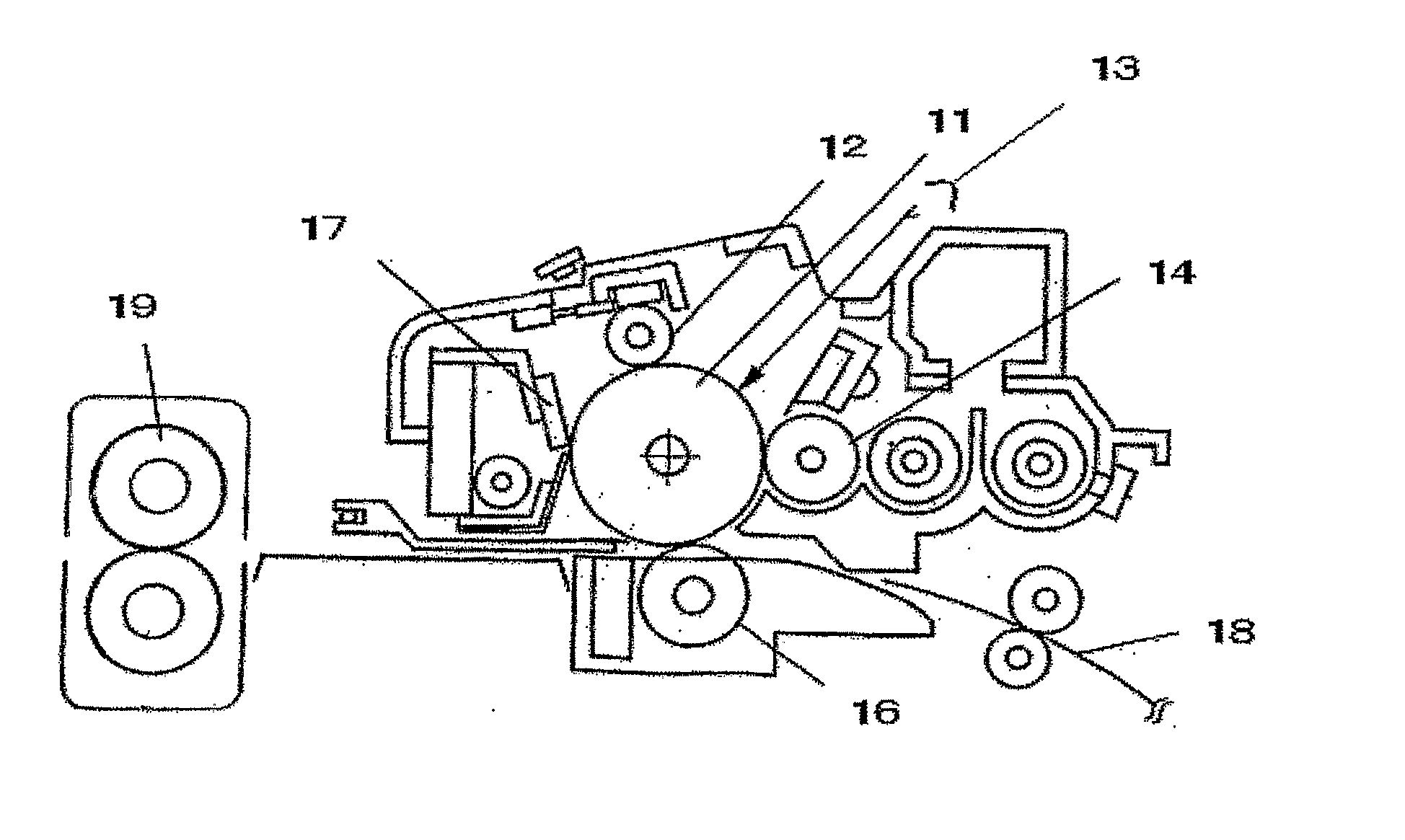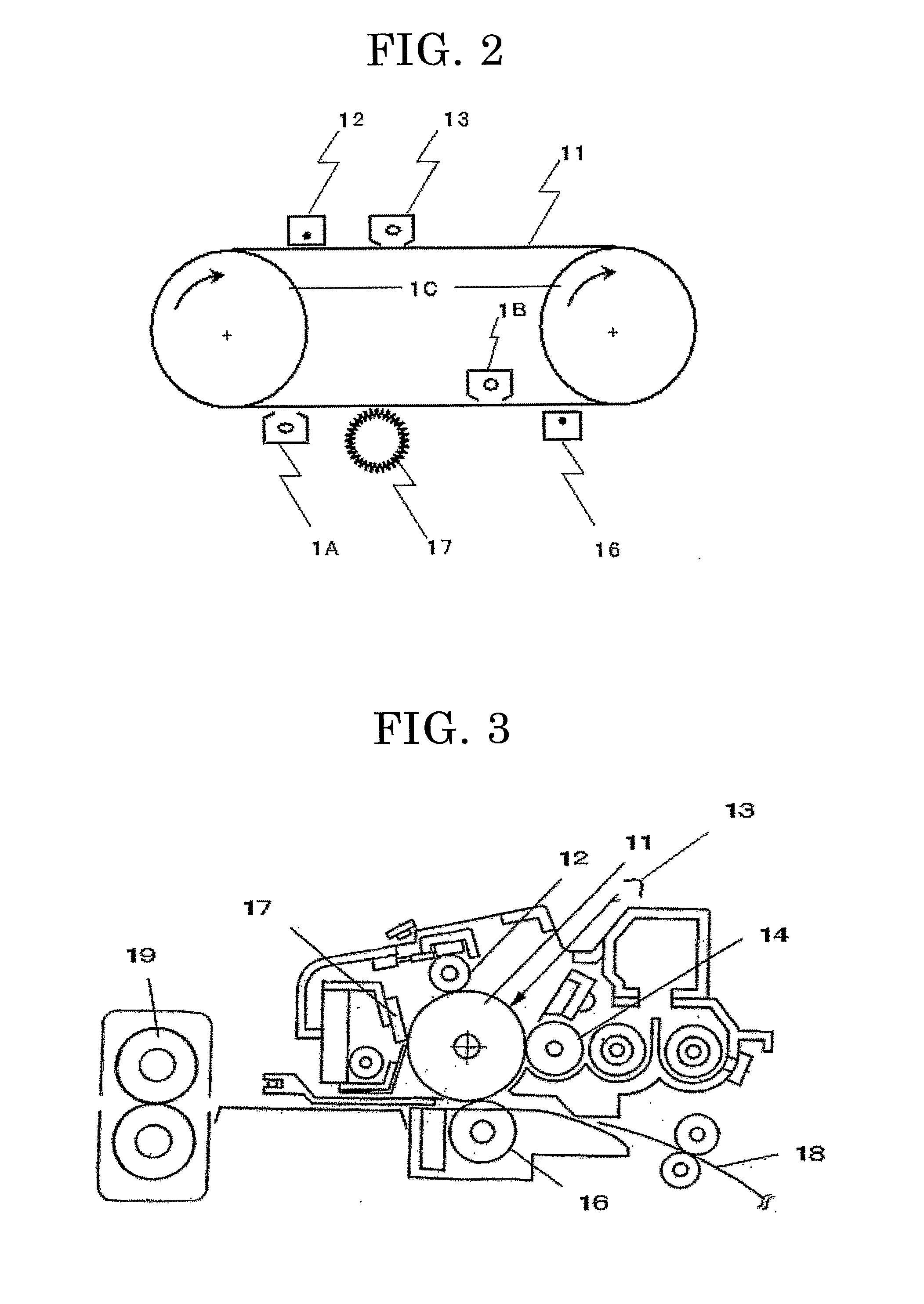Electrophotographic photoconductor, production method of the same, image forming apparatus, and process cartridge
a production method and photoconductor technology, applied in the direction of electrographic process apparatus, coatings, instruments, etc., can solve the problems of easy toner filming on the surface, inconvenience, and difficulty in cleaning the smear of toner, and achieve excellent sensitivity, high practical use value, and excellent acceptability
- Summary
- Abstract
- Description
- Claims
- Application Information
AI Technical Summary
Benefits of technology
Problems solved by technology
Method used
Image
Examples
example 1
[0366]On each of an aluminum drum having a wall thickness of 0.8 mm, a length of 340 mm and an external diameter of 40 mm and another aluminum drum having a wall thickness of 0.8 mm, a length of 340 mm and an external diameter of 30 mm, an undercoat layer coating liquid, a charge generating layer coating liquid, a charge transporting layer coating liquid each containing the following composition were applied and dried in this order, thereby forming an undercoat layer having a thickness of 3.5 μm, a charge generating layer having a thickness of 0.2 μm and a charge transporting layer having a thickness of 24 μm.
[0367]The charge transporting layer was spray-coated with a crosslinked-resin-surface-layer coating liquid containing the following composition. After the coating liquid was set to touch for five minutes, ion exchanged water was sprayed over a resulting wet film under the conditions, a rotation speed of drum: 40 rpm, a spray speed: 1.4 mm / s, a spray pressure: 1.0 kgf / cm2, and t...
example 2
[0372]An electrophotographic photoconductor was produced in the same manner as in Example 1, except that the conditions for water spraying on a wet film were changed to rotation speed of drum: 100 rpm, spray speed: 1.4 mm / s, a spray pressure: 2.0 kgf / cm2, and the number of spray treatments: twice.
example 3
[0373]An electrophotographic photoconductor was produced in the same manner as in Example 1, except that the conditions for water spraying on a wet film were changed to rotation speed of drum: 160 rpm, spray speed: 1.4 mm / s, a spray pressure: 3.0 kgf / cm2, and the number of spray treatments: three times.
PUM
| Property | Measurement | Unit |
|---|---|---|
| Length | aaaaa | aaaaa |
| Percent by mass | aaaaa | aaaaa |
| Percent by mass | aaaaa | aaaaa |
Abstract
Description
Claims
Application Information
 Login to View More
Login to View More - R&D
- Intellectual Property
- Life Sciences
- Materials
- Tech Scout
- Unparalleled Data Quality
- Higher Quality Content
- 60% Fewer Hallucinations
Browse by: Latest US Patents, China's latest patents, Technical Efficacy Thesaurus, Application Domain, Technology Topic, Popular Technical Reports.
© 2025 PatSnap. All rights reserved.Legal|Privacy policy|Modern Slavery Act Transparency Statement|Sitemap|About US| Contact US: help@patsnap.com



